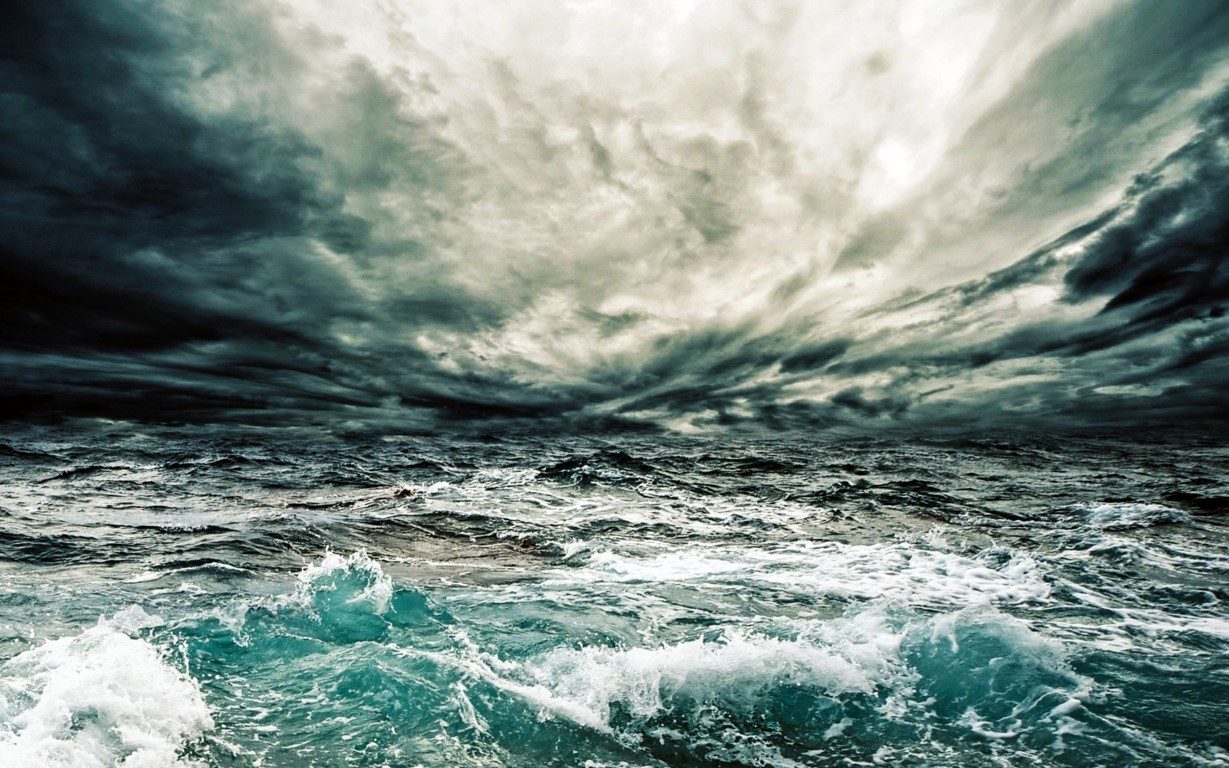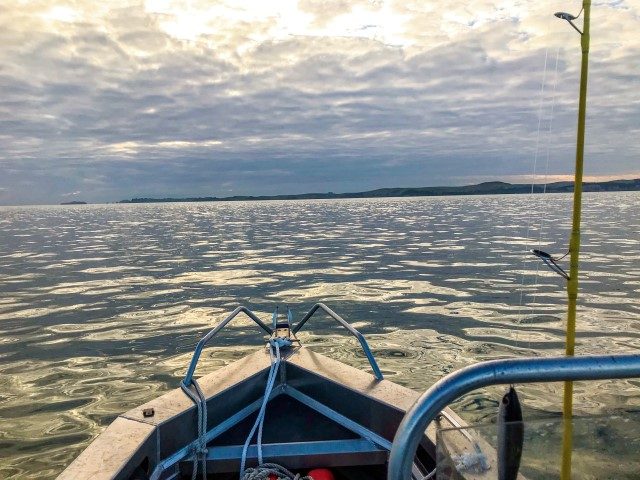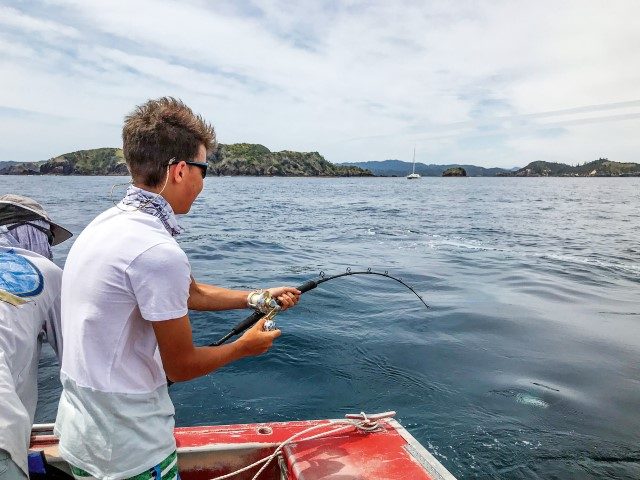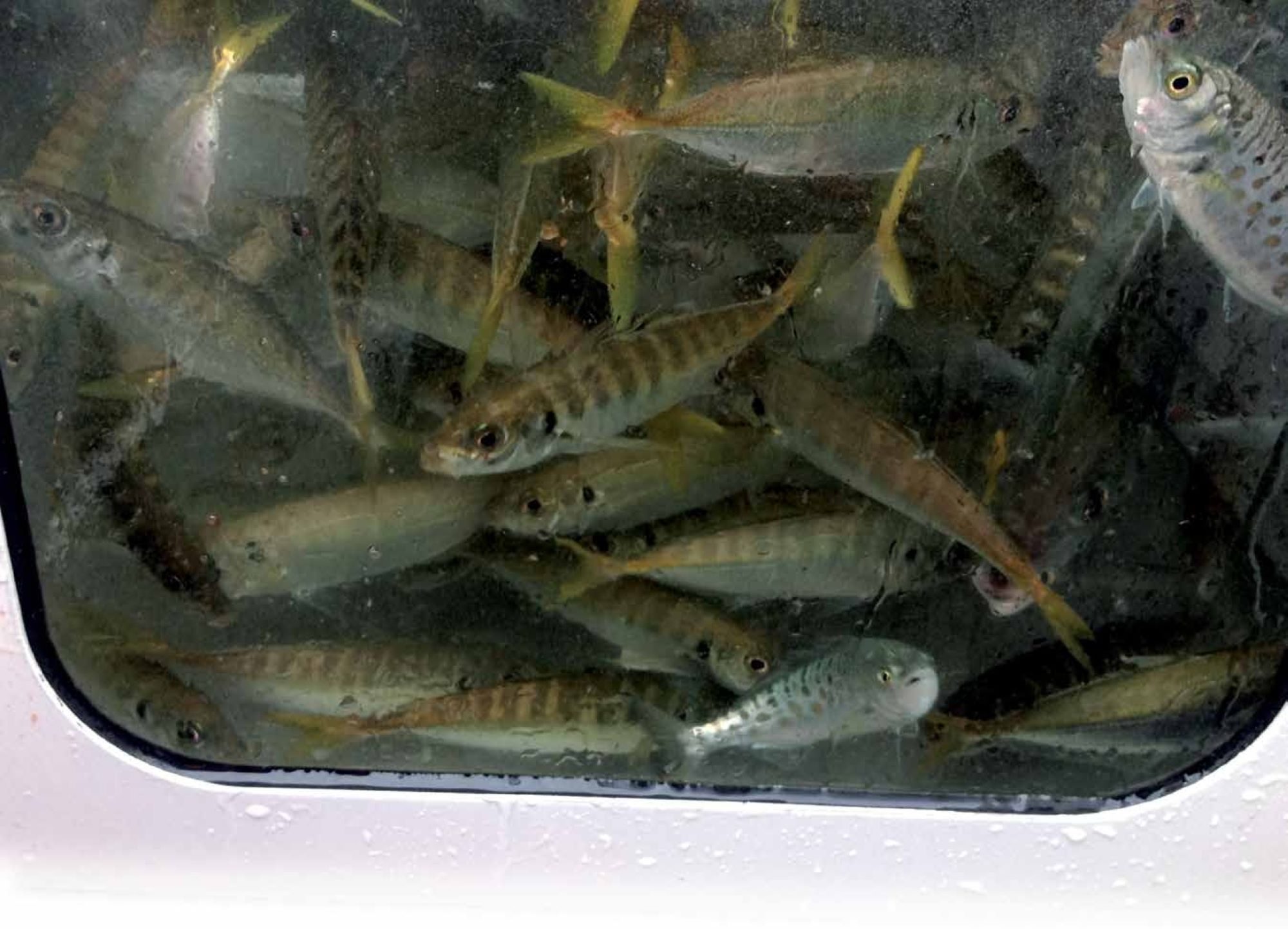

Just how much does the weather affect fishing success?
Fisherfolk obsess about the weather, repeatedly checking forecasts before fishing expeditions, staying up late to watch the night sky for changes, and getting up early to check on wind direction and strength.
Fishing is full of weather-related lore: the fishing is always best on a rising barometer; it fishes best just before/after a storm; wind from the west, fish bite best; wind from the south, fish close their mouths; wind from the east, fish bite least.
Some anglers rather fish in rain than in sunshine and many swear by windy conditions. So, what’s the dope? Does the weather really make a difference or do fishers simply use it as an excuse for poor fishing?
BAROMETRIC PRESSURE
Fish are undoubtedly affected by changes in barometric pressure, especially if they live in relatively shallow water.
Put simply, barometric pressure is the weight of the earth’s atmosphere pushing down on the water’s surface, which compresses the air inside a fish’s swim bladder. A barometer is used to gauge atmospheric pressure by measuring changes in liquid mercury, which rises in the barometer glass with rising pressure and falls when the pressure drops. Barometric pressured is expressed in hectopascals (hPa).

Many studies of freshwater American bass have shown that they respond quite predictably to air pressure changes. Specifically, a fast rising or falling barometer tends to stimulate feeding activity whereas bass shut their mouths when the pressure is steady and especially when it is steady and low.
In general, fishing for bass is better when barometric pressure is high (above 1018hPa) and less good when barometric pressure is low (under 1014hPa). That’s thought to be because high pressure compresses the swim bladder, so it takes up less of the abdominal cavity, making the fish feel more comfortable, whereas low pressure allows the bladder to expand, pushing on the stomach and suppressing appetite. Maybe… But the key time to fish is when barometric pressure is changing and the quicker the change, the better the fishing.
Many anglers would agree that a quickly falling barometer produces the best fishing bite of all. A falling barometer happens when the weather changes from clear skies to overcast, rain or storm. Who among us hasn’t experienced hot fishing just before a storm? It’s an angling truism.

Once the storm sets in and the barometer bottoms out, fishing becomes difficult, staying that way until barometric pressure starts to rise again. Fishing on a rising barometer (after a storm) is usually steady, with good fishing more likely when the barometer rises quickly, while fishing when the barometer is high and stable is average/normal.
In my experience, these observations hold true for lake dwelling trout and inshore marine fish species like snapper as well, with pre-frontal conditions (bad weather on the way) producing good fishing, while post frontal (clearing) conditions delivering more mixed results.
TEMPERATURE
There are other weather-related factors that influence fishing success, including seasonal changes and sudden temperature fluctuations. Even slight temperature changes cause fish to behave differently.
We usually experience fine weather and light winds during periods of high pressure, which makes fishing more pleasant, if not always more productive. But long periods of high pressure can mean high temperatures as well.
For sea fishers, elevated water temperature can be good or bad, depending on what you hope to catch. But every species has a temperature range where it is most comfortable: too hot or too cold and fish will simply shut down or move away.
In winter, a warm day can often mean better than average fishing and sometimes a cooler than usual summer’s day can have a similar result. Maybe the fish just enjoy the change? However, severe sustained temperature changes, or long periods of unusually warm or cold weather, adversely affect fishing success for both freshwater and saltwater species.
In cold water, fish may be lethargic and difficult to tempt into biting, while warm water typically increases feeding activity, but only to a point – if the water gets too warm, fish risk heat exhaustion and may curtail all activity, including feeding. Sudden spikes in temperature disrupt normal fish behaviour.
Current trends indicate an overall warming of New Zealand’s coastal waters and there is already evidence of displacement for some common fish types, either north or south, depending on their preferred temperature range.
LIGHT
The amount and intensity of light in the water can have a profound effect on your fishing. For many species, including trout and inshore marine species like snapper, low light conditions, whether as a result of the time of day or overcast conditions, often equal good fishing.
Low light levels seem to embolden many fish. Maybe it makes them harder for both predators and prey to see? Conversely, for some sight-hunting fish species, bright conditions and clear water are prerequisites for feeding success.
I generally have no qualms fishing for tropical reef and lagoon species in bright, sunny conditions. And while fishing for giant trevally can be spectacularly good at night, it’s always best when there is a big moon in the sky because GT are sight hunters. They use the moon to target flying fish silhouetted against the water’s surface.

Shallow water fishing is generally challenging with clear skies and the sun high overhead, but fishing in deeper water in such conditions can still be productive. If the light is low – dusk or dawn, or in overcast conditions – sneaking around the shallows with lures and baits can be highly productive, especially in areas that haven’t been disturbed.
Suspended sediment also reduces light levels in the water and helps mask the presence of predatory fish, so it can be worth fishing murky water. But there’s a fine line between enough colour in the water for good fishing and too much, which definitely shuts down the bite.
RAIN
Fishing in the rain, while seldom pleasant, can be rewarding. If there’s little wind, rain often serves to flatten the sea surface, and since light levels are low, the fishing can be good. Too much rain and sediment carried off the land can start to adversely affect fishing success. Too much sediment makes it difficult for fish to see, clogs their gills and smothers benthic communities.
Freshwater ecosystems are remarkably resilient, quickly bouncing back quickly from heavy rain and even severe floods. Nevertheless, species like trout need a certain level of water clarity to feed, so there’s not much point fishing in a muddy river or lake.
WIND
Wind plays its part in fishing success too. A bit of wind can be a good thing. Ruffled water refracts the light and helps fish to feel more comfortable in shallow water. It also makes anglers and boats harder for them to detect. The same is true for waves breaking against shorelines, whitewater and foam lines.
Wind generates waves, which stir up the bottom in shallow water, uncovering all sorts of food items. But when conditions are too severe, or the water is carrying too much suspended sand and silt, fish leave the area.

Of course, too much wind makes it difficult to fish. Controlling the boat – it’s drift and how it lies to the anchor – becomes much harder and windy conditions make casting more challenging. Keeping in touch with your terminal tackle can be almost impossible.
But usually, well before fishing becomes too hard, boating goes from being fun to downright dangerous. As a small boat fisher, I seldom go out if the forecast is for more than 10-12 knots and I generally come home whenever it picks up to 15 knots – for my own safety and comfort. Of course, there are exceptions – wind direction and the availability of shelter are factors to consider – but the 15-knot rule ensures I get home safely and usually enjoy my fishing as well.
For more check out: ontrackfishing.com




